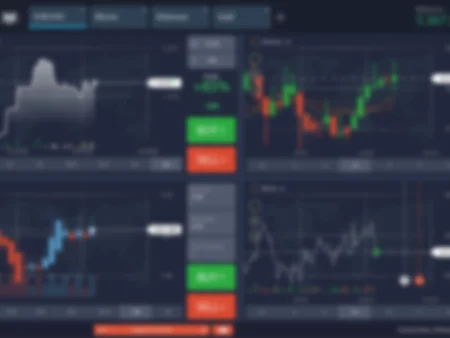EOD Trading Strategy: A Comprehensive Guide to End-of-Day Trading
In the world of financial trading, strategies are as diverse as the markets themselves. From scalping to swing trading, traders employ various approaches based on their risk tolerance, time commitment, and market expertise. One strategy that has gained significant popularity among traders who want to balance market participation with other commitments is End-of-Day (EOD) trading.
This article will dive deep into the End-of-Day trading strategy, exploring what it is, how it works, and the pros and cons of adopting this approach. We’ll also provide some valuable tips and tricks to help you succeed as an EOD trader.
What is EOD Trading Strategy?
End-of-Day (EOD) trading is a style where traders place orders or make trading decisions near or after the market’s closing time, focusing on the price action and trends of that day. The main idea behind EOD trading is to analyze the daily price chart once the markets are about to close or have closed, typically around the last hour of the trading session.
Unlike intraday or scalping strategies, which require constant monitoring throughout the day, EOD trading provides a more relaxed and less time-intensive approach. Traders make decisions based on the daily closing price of an asset, which is seen as one of the most reliable indicators of the asset’s overall performance during that day.
In EOD trading, the focus is usually on daily charts (D1), where each candlestick or bar represents a single trading day. Traders analyze these charts to identify patterns, trends, and price actions that can inform their trading decisions for the following day.
How Does EOD Trading Work?
EOD trading revolves around analyzing price action and technical indicators at the end of the trading day. Once the markets near their closing hours, traders will:
- Analyze Daily Candles: Review the daily candlestick chart to assess how the market has moved throughout the day.
- Identify Key Support and Resistance Levels: Determine where the asset’s price may find barriers or zones of interest.
- Apply Technical Indicators: Use tools such as moving averages, RSI (Relative Strength Index), MACD (Moving Average Convergence Divergence), or Bollinger Bands to validate trends or signals.
- Set Up Orders: Based on the analysis, place buy or sell orders before or after the market closes. These orders are typically limit orders or stop orders, which trigger only if the asset hits certain price points.
- Hold Overnight: EOD traders often hold their positions overnight, potentially for several days, waiting for their target prices to be hit.
Positives of EOD Trading Strategy
EOD trading offers several advantages, making it an attractive option for both beginner and experienced traders alike.
1. Time Flexibility
One of the most significant benefits of EOD trading is the flexibility it provides. Unlike day traders or scalpers who need to be glued to their screens throughout the trading session, EOD traders can make their trading decisions at the end of the day. This allows you to trade effectively even if you have a full-time job or other commitments.
2. Less Emotional Stress
Because you only need to analyze the market once a day, EOD trading helps reduce the emotional rollercoaster that intraday traders often face. With less focus on short-term price fluctuations, you can avoid knee-jerk reactions to market noise and focus on the bigger picture, making more rational, data-driven decisions.
3. Clear Signals and Data
The closing price of the market is considered one of the most critical price points of the day because it reflects the consensus of all market participants. This provides clearer signals for traders, reducing false signals that are more prevalent during intraday noise.
4. Simpler Strategy
End-of-Day trading strategies are typically less complicated than other forms of trading, as you can rely heavily on price action and a few key technical indicators. There’s no need for advanced algorithms or high-speed technology to execute your trades, making it an ideal approach for traders who want to keep things simple.
5. Lower Trading Costs
Since EOD traders make fewer trades than scalpers or day traders, they incur fewer trading costs such as commissions and spreads. Lower trading frequency means your overall costs per trade can be significantly reduced, maximizing your profit potential over time.
Negatives of EOD Trading Strategy
While EOD trading offers many advantages, it’s essential to consider the potential downsides as well. Here are a few challenges traders may face with this strategy:
1. Overnight Risk
Since EOD traders often hold positions overnight, they are exposed to overnight risks such as market gaps, after-hours news, or economic data releases that may dramatically shift prices by the time the market reopens. This can sometimes result in unexpected losses or missed profit opportunities.
2. Fewer Trading Opportunities
Because EOD traders primarily rely on the daily chart, they miss out on intraday price movements and short-term opportunities. If you’re someone who enjoys frequent trading or capturing quick profits, EOD trading may feel limiting.
3. Delayed Reactions
As you’re analyzing the market at the end of the day, you may be slower to react to rapid price movements that could occur during the trading day. Sometimes, opportunities can slip by, and your trades may not be as precise as those executed during the heat of the moment.
4. Dependency on Technical Analysis
EOD trading heavily relies on technical analysis, meaning that if you’re not comfortable reading charts, patterns, and indicators, it can take some time to develop your skills. It also doesn’t always take into account fundamental factors, which can lead to missed opportunities driven by economic news or earnings reports.
EOD Trading Strategy Tips & Tricks
To succeed with EOD trading, it’s essential to adopt a disciplined approach and follow best practices. Here are some tips and tricks to help you maximize your success with this strategy:
1. Use Fewer, Reliable Indicators
While many technical indicators are available, overloading your charts with too many tools can lead to analysis paralysis. Focus on a few reliable indicators that you understand well. Commonly used tools include:
- Moving Averages: Identify the direction of the trend and potential reversal points.
- Relative Strength Index (RSI): Determine overbought or oversold conditions.
- Bollinger Bands: Measure volatility and potential breakout areas.
- Support and Resistance Levels: Identify key price points for entry and exit decisions.
2. Set Realistic Goals
When using an EOD strategy, your trading horizon is typically longer than that of day traders. Set realistic goals for each trade, focusing on capturing larger price moves rather than quick, small profits. Aim for a risk/reward ratio of at least 2:1, ensuring that your potential gains outweigh your possible losses.
3. Implement Stop-Loss and Take-Profit Levels
Because of the risks associated with holding positions overnight, it’s crucial to use stop-loss orders to protect yourself from significant losses if the market moves against you. Likewise, setting take-profit levels ensures that you lock in profits once your price target is met.
4. Focus on Liquid Markets
EOD trading works best in highly liquid markets such as major forex pairs (EUR/USD, GBP/USD), popular indices (S&P 500, DAX 30), and large-cap stocks. These markets tend to have more consistent trends and less erratic price behavior, making your analysis more reliable.
5. Stay Informed of Major News Events
Although EOD trading is largely technical, it’s still important to stay aware of fundamental factors such as earnings reports, economic data releases, and geopolitical events that could impact market movements. Significant news can create large price gaps, especially when holding positions overnight, so factor this into your decision-making process.
6. Be Patient
EOD trading requires a patient mindset. Since you’re only making trading decisions at the end of the day, avoid the temptation to constantly check the markets throughout the day. Trust your analysis and strategy, and allow your trades time to unfold according to your plan.
7. Practice on a Demo Account
Before committing real capital, it’s wise to test your EOD strategy on a demo account. This will help you fine-tune your approach, experiment with different indicators, and gain confidence in your analysis without risking your money.
Conclusion: Is EOD Trading Right for You?
End-of-Day (EOD) trading is an excellent strategy for traders looking to strike a balance between their personal life and market participation. Its time-efficient approach, reliance on daily price action, and lower emotional stress make it an attractive option for part-time traders and those who prefer to avoid the high pressure of intraday trading.
While it comes with some risks, such as overnight exposure and missed intraday opportunities, EOD trading can be highly effective when implemented with discipline and a clear strategy. By following the tips and tricks outlined in this article, you can increase your chances of success and build a more consistent, sustainable trading routine.
Whether you’re a new trader looking for a relaxed trading strategy or an experienced trader seeking a time-efficient way to engage with the markets, End-of-Day trading could be the perfect fit for your financial goals.













